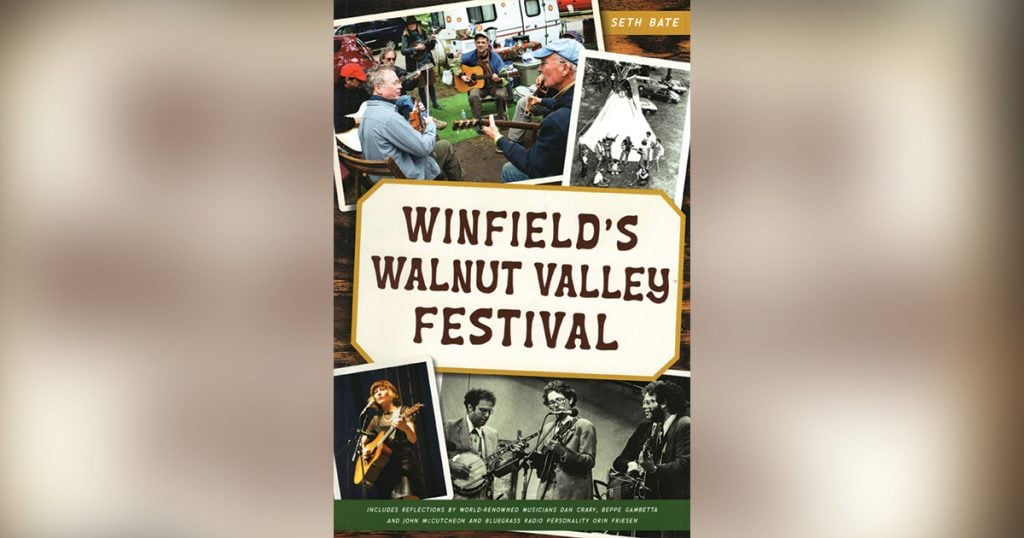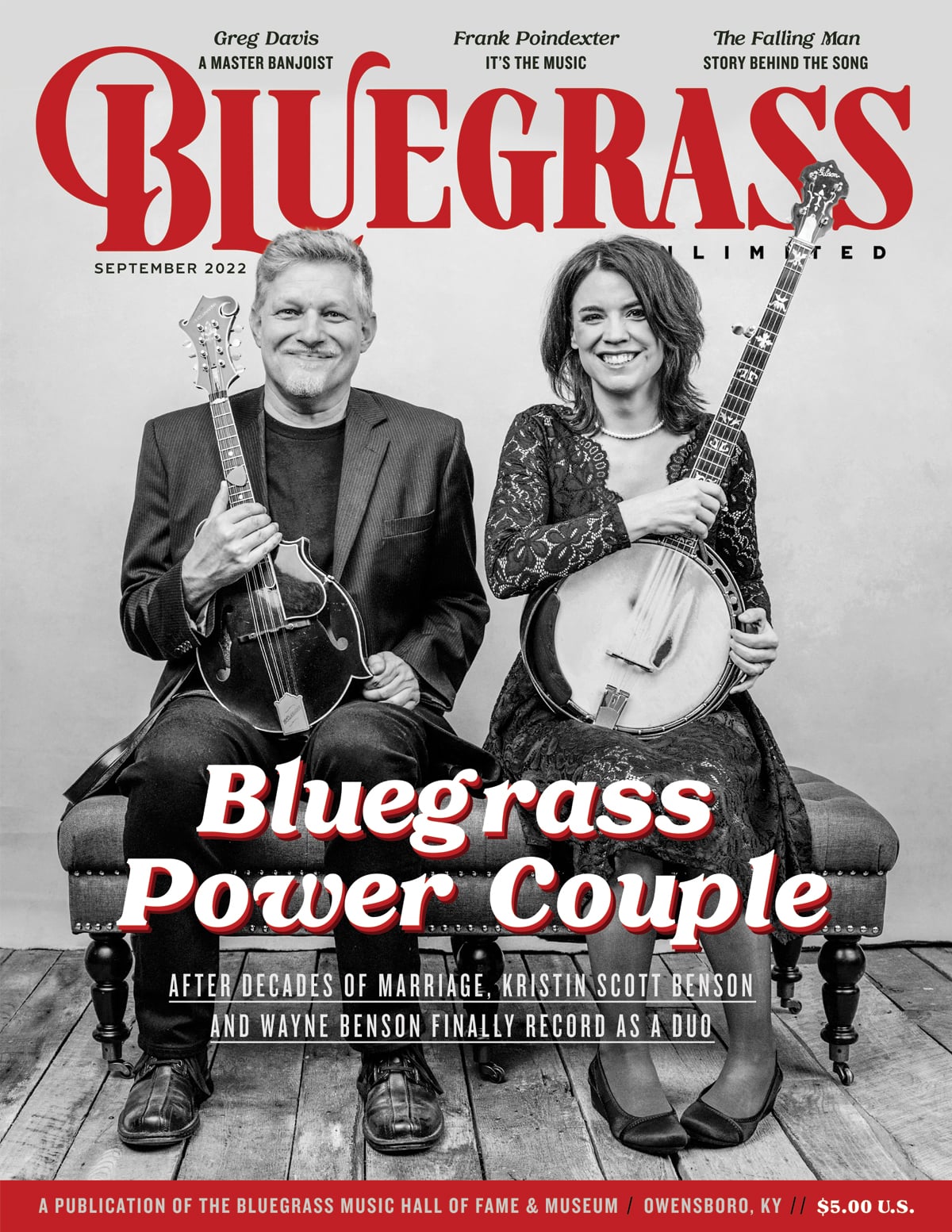Winfield’s Walnut Valley Festival
I attended my first Walnut Valley Festival in Winfield, Kansas in September of 1996. I had just started publishing Flatpicking Guitar Magazine and since the Walnut Valley Festival hosts the National Flatpicking Guitar Championship, Winfield seemed to be a good place for me to be. At the time, I had only printed one issue and so it didn’t seem fitting to get a booth space to set out one magazine. But, Don Gallagher was gracious enough to allow me to locate with the Gallagher Guitar booth.
I arrived at the festival in my van pulling a pop-up camper. Being a newbie, I arrived the night before the festival was to begin…silly me. Little did I know that if you arrive that late, it would be nearly impossible to find a camping spot. I drove around and around the campground at night and in the rain trying to find a place to camp. Finally, after my third or fourth pass through one area, someone flagged me down and said, “Let me move some of our vehicles around so that you can fit in beside us.” Thank goodness!
This generous soul made space for me to pull in and he even helped me set up the camper. In the morning when I came out of the camper, he was sitting at a table with is family eating breakfast. He said, “Come on over and eat with us. We made plenty.” Through the years I discovered that these are the type of folks that you’ll find everywhere at the Walnut Valley Festival. I continued to return to Winfield, Kansas on the third weekend of September every year for the next twenty years without fail.
Being a huge fan of the festival, you may imagine, on one hand, that I’d be a bit bias in reviewing this book. However, on the other hand, being a huge fan of the festival also brought with it the expectation that “If it is about Winfield, it better be good!” I’ll say right off the bat that I was not disappointed. The book does a wonderful good job of covering all of the various aspects of the festival and it captures them with the feel, flavor, detail, and importance they deserve.
Although Seth Bate was the force behind putting this book together and writes a bit of it, he had the willingness, and insight, to hand over most of the chapters to the real experts. The chapter about the Southwestern College Folk Festival that was a precursor to the Walnut Valley Festival was written by one of that festival’s founders, Sam Ontjes. The chapter about Winfield’s early years was written by Wayne Steadham, a guy who has been there and deeply involved since the beginning. The chapter on the importance of the guitar and the flatpicking contest was written by Dan Crary, flatpicking legend and one of the original authors of the contest’s rules. Ed and Jeannine Foster, who coordinated the contests from 1993 through 2008 provided another chapter that provided more contest information. The story of “unofficial” Stage 5 is told by Russell and Sherry Brace, founders of that stage. On and on, each chapter that covers a different aspect of the festival is provided by those who were there, were in charge, or otherwise intimately involved, with Seth Bate provided a few chapters here and there to provide connection and cohesion.
Several artists who are on-stage favorites also provided chapters about their Winfield experience, including Dan Crary, Leo Eilts, Beppe Gambetta, John McCutcheon and sign language interpreter Linda Tilton. Sound man Greg Smyer added a chapter about mixing sound, local radio personality and MC Orin Friesen added his reflections, the Walnut Valley Voice editor, Larry Junker, told it’s story, and Bart Redford, son of festival founder Bob Redford, wrote the conclusion. Appendix A provides Winfield milestones by date and Appendix B lists every artist and band who have performed on stage at the festival from 1972 through 2021. The book is also filled with just over one hundred wonderful festival photos.
While the festival’s history unfolds on these pages, the reader is presented with dozens of interesting and funny festival anecdotes, trivia, and stories. Many of the festival’s “unofficial” events, pranks, and other shenanigans are also revealed. Even though I attended the festival for twenty-one consecutive years, I learned a lot that I didn’t know about every aspect of the event.
There is much more that can be said about what this book offers, but due to lack of space, I will simply conclude by saying that I feel Seth Bate did a wonderful job capturing all aspects of the Walnut Valley Festival in a way that stays true to the feeling and vibe of the event. I think any Walnut Valley Festival veteran will enjoy reminiscing with this book as much as I did.

